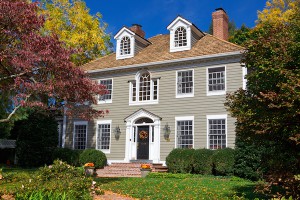How Weather Affects Exterior Paint
Weather exerts a continuous influence on painted exteriors. You should consider the climate of the location where you live when choosing an exterior paint and schedule exterior painting on days with ideal forecasts to ensure the best results. Paint exposed to high levels of direct sunlight, rain, or wind can be more likely to fade or chip than paint in mild climates.
The best days for painting are those with low humidity, mild temperatures, and little to no wind. Try to complete the majority of the painting on the outside of your home on days with this forecast. The time of day may also affect the quality and longevity of an exterior paint job. Paint should be applied after morning dew has dried and should have time to set before evening dew. Paint applied to a damp surface or that does not have time to dry before exposure to moisture is likely to fade faster and may sacrifice the distinctive feature of your chosen exterior painting finish.
Most paints are formulated to perform best in a moderate temperature range. These temperatures can also be more comfortable for painters and allow them to do their best work. It is also ideal to paint exteriors when the wind is not blowing and work in the shade when possible, as exposure to wind and direct sun may cause paint to dry unevenly.
Weather continues to influence paint long after the day on which painting is complete. If you live in a very sunny climate, you might want to avoid dark colors or look for paints with UV protection. Dwellers in rainy areas should factor high levels of moisture into their choice of paint and plan to repaint when cracks appear due to the expansion and contraction of structural materials. Painting professionals can help you select the best exterior painting products for your home.

